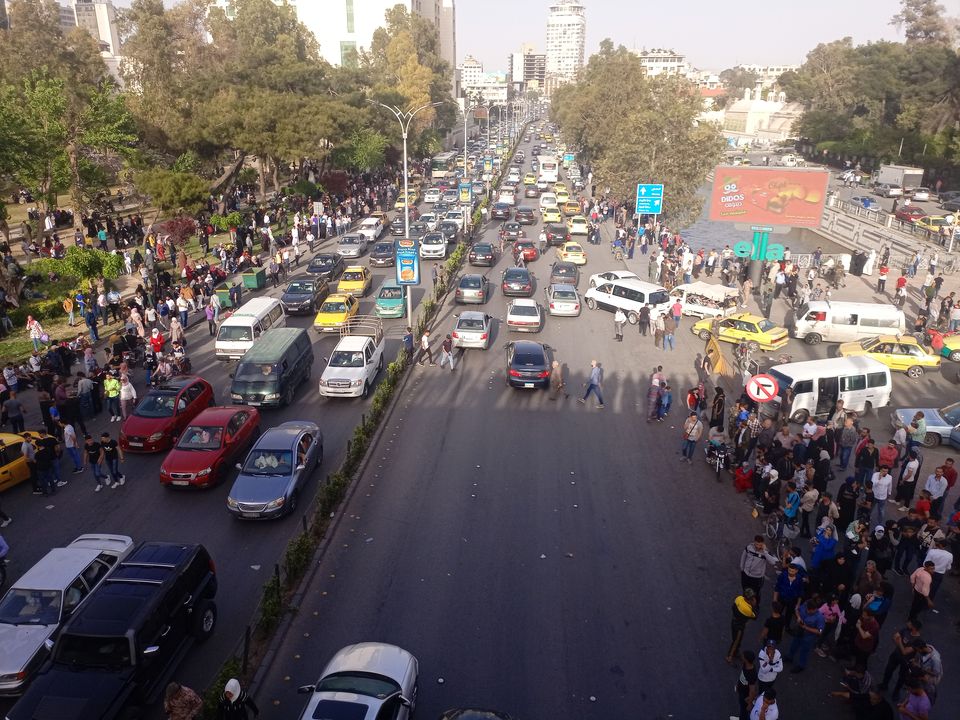
Chaos and False Hope after the General Amnesty Decree
Last week, the Syrian government announced a decree awarding amnesty to all those accused of committing acts of terrorism prior to 30 April 2022. This announcement was followed by the release of limited numbers of detainees, but also by chaos and false hopes for families wishing to be reunited with their loved ones. Although any detainee releases are a welcome development regardless of their scale, the amnesty decree does not represent meaningful progress on the issue of detainees and missing persons in the Syrian conflict. There have been numerous problems in the structure and the implementation of the amnesty that the Syrian government must address immediately, beginning with greater transparency about the release process.
The text of the amnesty decree, Legislative Decree No. 7 is sweeping and vague. It offers a “general amnesty” for crimes of terrorism, as defined in part by the Counter-Terrorism Law that the Syrian government passed in 2012 to criminalize most forms of political dissent. Notably, it does not offer amnesty for crimes that “led to the death of a person.” The decree implies that the government will not pursue legal action against those covered by the amnesty, but specifically reserves the right of aggrieved individuals to do so in civil courts. In the hours and days after the announcement of the decree, as many as 360 detainees were released. Most of the detainees had been held in Sednaya Military Prison, where the Counter-Terrorism Court and Military Field Court are known to have sent many of those they charged with crimes related to terrorism. Some of the individuals who were released had been imprisoned for as long as eleven years.
The motivations behind the decree are unclear. Some have interpreted the amnesty order as an attempt to deflect from recent media attention around the Tadamon massacre at Syrian state security forces, although the decree was likely in development before the 2013 atrocity came to light. Others see the amnesty as a reform undertaken by the Syrian government in exchange for the diplomatic normalization that is underway with regional governments. Regardless of the motivation, however, the amnesty does not represent adequate progress on the issue of detainees and missing persons, with an estimate of as many as 100,000 people still believed to be held in government detention. The amnesty order only addresses terrorism crimes, which means that thousands of political prisoners and prisoners of conscience who have been held for years on non-terrorism charges, such as conspiring against state security, receive no protection under the decree. Syrians arbitrarily detained in the numerous security branches located around the country will likely not be released either.
The implementation of the amnesty decree also suffers from numerous defects. First, there is no transparency about who has been charged or convicted for terrorism-related crimes, and as a result many families do not know if they can expect their loved ones to be released under the amnesty. Second and relatedly, because of the opaque operations of the Counter-Terrorism Court and Military Field Court and the lack of fair judicial procedures in Syria generally, there is no reliable evidence as to whether the actions of those it charged led to the deaths of others. Third, the nature of the actual release of detainees has been chaotic and inhumane: state security forces have unceremoniously dumped detainees on the street in the middle of the night without providing further guidance or notifying their family members. Many of those released have no money with them and no way to reach their families or, in many cases, no knowledge of where displaced family members are currently located.
For their part, Syrian government officials have refused to provide clarity. According to the head of the Counter-Terrorism Court, Zahra Bashmani, families should not expect to receive official notification about the transfers or release of their loved ones. The public prosecutor and the investigating judge in the courts are making determinations about whom the amnesty applies to and notifying prisons accordingly, such that the detainee release process will be “gradual.” In response to widespread criticism, Syrian authorities have made a show of publicly releasing lists of released detainees, albeit in a superficial and retroactive manner that does not address the larger issues at stake.
The nature of the amnesty decree and its application are worsening the plight of detainees and their families. Unreliable lists of detainees to be released are circulating online, while many families have resorted to paying brokers inside Syrian state intelligence agencies for information about their loved ones or under the hope that they can add a name to the released detainees list. In the days since the announcement of the amnesty, hundreds of Syrian families have gathered under the Jisr al-Ra’is bridge in central Damascus in the hope of reuniting with their loved ones.
The Syrian government should coordinate directly with the ICRC in ensuring that these efforts are transparent and humane. If the government provided the ICRC with information about planned releases, the ICRC would be well-placed to inform families of releases and assist the recently released in locating and traveling to their families. The United Nations OHCHR, which is currently authoring a report on a possible missing persons mechanism for Syria, should examine the challenges of the current releases as it considers how a future mechanism could help create a more humane process for detainees and their loved ones.
______________________________________________________
For more information or to provide feedback, please contact SJAC at [email protected] and follow us on Facebook and Twitter. Subscribe to SJAC’s newsletter for updates on our work